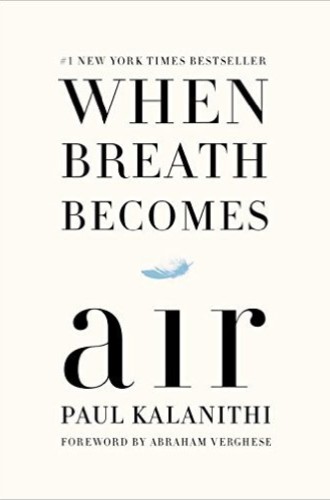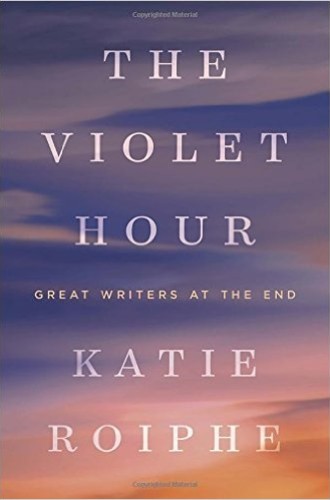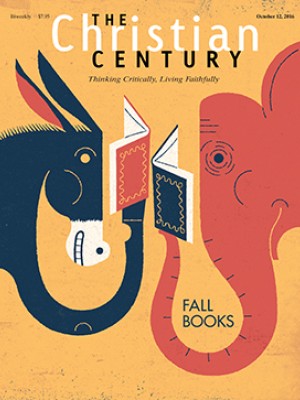Of the making of books there is no end, but with books about death there is a waxing and waning. Right now, two books about death stand astride the New York Times best-seller list: Paul Kalanithi’s When Breath Becomes Air and Atul Gawande’s Being Mortal. Between them, they’ve been on the list almost 100 weeks.
Back in the early 1960s, when Gloria Steinem was in her twenties, she tried to interest publishers in something she called The Death Book, a compendium of quotes and stories. There were no takers. The times were a changin’ in those days, and the focus was on youth. Now they’re a changin’ again, and the interest in death and aging is reaching a crescendo. Aging feminist Betty Friedan led the way. Nora Ephron, Jane Fonda, and Steinem herself have also published books about aging and death.
Read our latest issue or browse back issues.
“Mortality is hot,” said a recent reviewer in the Los Angeles Times. Books about death span many categories. Books have preserved the dying testimonies of Oliver Sacks, Christopher Hitchins, John Updike, and Jane Kenyon. Notable literary memoirs about the death of loved ones include those by Joan Didion, Donald Hall, and Calvin Trillin. Other books explore particular issues surrounding death, such as The Good Death, by Ann Neumann, and The Undertaking, by Thomas Lynch.
Paul Kalanithi, a surgeon who died at 37, begins his memoir of his own dying this way: “I knew with certainty that I would never be a doctor.” Though Kalanithi was born into a second-generation Indian-American family brimming with physicians, his first love was not science but literature. He majored in English literature at Stanford and went on to earn one master’s degree in literature and another in philosophy. His turn toward medicine was inspired by poet Walt Whitman, who said that only a physician could understand the “physiological-spiritual man.” Kalanithi craved a new kind of sublime, “to forge relationships with the suffering, and to keep following the question of what makes human life meaningful, even in the face of death and decay.” He did not drop the mantle of literature; he laid it aside.
As he was finishing the seventh year of a neurosurgery residency, Kalanithi learned at age 36 that he had stage-four lung cancer. He chose to return to the surgery theater, standing on his feet for many hours, swiftly and deftly unzipping skin and extracting tumors, knowing that a millimeter on either side of the knife could mean the difference between life and death or between keeping an identity and losing it. Often in physical agony, he explained how his calling persisted: “Moral duty has weight, things that have weight have gravity, and so the duty to bear moral responsibility pulled me back into the operating room.”
The strength it took to enact Samuel Beckett’s words—“I can’t go on. I will go on”—by going back to surgery was just the beginning. Kalanithi’s final vocation emerged after chemotherapy failed, and it became clear that he would lose the battle sooner rather than later.
After he could no longer hold a scalpel steady, he returned to his first love—reading and writing. He wrote the essay “How Long Have I Got Left?” on a plane and sent it to friends for comments, one of whom sent it to a New York Times editor, who accepted it. The response was immediate and exhilarating. As he read the e-mails flooding his box, he gained inner strength. He began to envision the merging of his two vocations of healing and meaning-making. His body grew weak as his spirit expanded. He got a book contract.
As he wrote, under blankets and with his baby daughter Cady close to him, reminding him of life that would continue, he drew on his memory of the literary canon and his thoughts took on an increasingly spiritual cast. Kalanithi had abandoned the Christian faith of his devout family during his schooling but had returned to faith after realizing that if there was no God, then the best parts of living—love, honor, redemption, sacrifice, forgiveness—were also false. He refused atheism because he could not build a meaningful life on the idea of blind determinism. His need to believe in love and redemption led him back to Jesus, in whom he saw the highest value of all: “The main message of Jesus . . . is that mercy trumps justice every time.”
This theology radiates softly under the fascia of the book, as though waiting for a skilled surgeon to carefully reveal the beautiful brain, or the beating heart, underneath. It makes no attempt to convert.
Kalanithi died before finishing the book. It’s filled with abrupt transitions from one subject to another, like a life interrupted by cancer. But a more polished, finished book would not have the same impact as this set of fragments.
His family promised to complete what he had begun, and the result may be a better work than if he had completed it himself. His wife Lucy’s epilogue is one of the very best pieces of writing in the book, and it is she who names Paul’s final vocation: “He wanted to help people understand death and face their mortality.” A physician herself, Lucy Kalanithi recognizes the contribution he could make: “Paul’s decision not to avert his eyes from death epitomizes a fortitude we don’t celebrate enough in our death-avoidant culture.”
Kalanithi uses a quotation from Montaigne as an epilogue: “If I were a writer of books, I would compile a register, with a comment, of the various deaths of men: he who should teach men to die would at the same time teach them to live.”
The quotation could apply to Katie Roiphe’s book also. The Violet Hour takes up Montaigne’s challenge but with less confidence in the outcome. Roiphe roiled cultural waters in the 1990s with The Morning After: Sex, Fear, and Feminism. The Violet Hour defies genre, mixing memoir, journalism, biography, and literary criticism as it ponders the dying of six writers—Sigmund Freud, John Updike, Dylan Thomas, Maurice Sendak, James Salter, and Susan Sontag.
Roiphe is not a moralist. She eschews sentiment. She begins her book with the kind of explanation required in a postmodern world: she locates herself in relation to her subject as the girl who almost died at age 12 from a strange form of pneumonia. From that time on, the subject of death has called to her.
The other personal story motivating her research is that of her father’s heart attack as he was walking across the marble floor in the lobby of his building. Though he was 82 years old, his sudden death shocked his daughter, and her lifelong fascination/fear became even stronger. It’s no surprise that five of the six writers she selects are male. More than one of them remind her of her father.
She rejects any purpose higher than that of seeing. “I don’t believe that you can learn to die, or gain wisdom, or prepare, and the work I have done on this book has, if anything, confirmed that suspicion, but I do think you can look at a death and be less afraid.” Religion plays the role of antithesis in this book. Roiphe associates redemption with falsehood. She even distrusts lyricism, although in her youthful illness she found Yeats’s “Sailing to Byzantium” consoling. Instead of heaven, she imagined along with the poet a place called Byzantium, an “eternal world of art.”
Like Roiphe herself, Freud, Sendak, Sontag, and Salter were born into Jewish families but considered themselves agnostic or atheist. Thomas, having grown up in Wales, uses religious language in his poetry—but he does so as an artist rather than a believer. The only attention Roiphe pays to Thomas’s religious background is to ask whether one of his errors in naming was “a new iteration of his Catholic boy’s guilt.”
Updike is the only practicing Christian in the group. His lifelong devotion to the Book of Common Prayer and the Episcopal Church present a puzzle to Roiphe. She’s not tripped up by the apparent contradiction of his adulteries; she has a special interest in his linking of adultery and immortality: “I have a soft spot for those who try to defeat death with sex.” It’s irony, not sex, that makes it difficult for her to understand Updike’s religious life.
She explains in an endnote that Updike’s biographer Adam Begley helped her see continuity where she could only see confusion. Updike’s final book of poems, Endpoints, includes these lines about clergymen: “comical purveyors / of what makes sense to just the terrified.” Roiphe settles on this explanation: “Updike approached everything under the sun with irony, including his deeper passions, his beliefs, his sources of marvel and awe.”
As in life, so it is in books: the ending forces confrontation with meaning. What’s it all about? In her epilogue, Roiphe tries once again to explain her motive and to distill meaning from the enormous amount of reading and interviewing that went into this work. She recognizes that she not only feared death but feared the fear of death. Over this fear of fear she appears to have gained some advantage.
The closest she comes to transcendence is this sentence: “In the actual moment, you do not have a choice. Grace finds you. Acceptance hunts you down.” Salter, the only one of her six writers still living at the time she did her research, gave her the words she was searching for all along: “We make our own comfort.”
These two books deserve a permanent place in the emerging literature one might term “seeing death anew.” Perhaps their chief weakness is their reliance on predominantly white male authors. Kalanithi relies heavily on T. S. Eliot and many other writers of the Western canon. Roiphe’s book especially would have benefited from more inclusive choices. I began to think about other author deaths as I read: Zora Neale Hurston’s, Maya Angelou’s, Chief Joseph’s, Edith Wharton’s, Willa Cather’s, and Jane Kenyon’s.
If indeed seeing is the best metaphor for both books, then perspective and angle of vision become paramount. Kalanithi brings the camera close up. The reader lingers in the room with the family and participates in the author’s tortured decisions about how to spend his remaining time. His comfort is warm. It glows with the light of the literary passages he has taken to heart, the three generations of extended family surrounding him, and the everlasting arms of faith underneath all.
Roiphe, on the other hand, views each death from a distance, both because she herself is not currently in the “active dying” stage and because she privileges a perspective that could be called cold comfort. In explaining her decision in 2014 to interview the “thriving eighty-nine-year-old writer” James Salter, she focuses approvingly on a quote from Graham Greene: “The writer must have a tiny sliver of ice in his heart.” She loves ice as much as Kalanithi loves fire.
As much as these two seem to be polar opposites in temperament and values, they converge in two places. The first is beauty. “There is something glorious in the conflagration of everything at the end. The beauty was what ambushed me,” says Roiphe. Beauty ambushed Kalinithi also. Dying reinvigorated his marriage. It gave him present-moment awareness. His last day as a surgeon was beautiful. His senses were fully engaged, from the smell of the eucalyptus and pine in the parking lot to the suds that slipped off his hands into the sink as he prepped to the sonorous sounds of a saxophone he felt in his body while he sewed up his last patient. His wife Lucy says the last two years were both the most difficult and “the most beautiful and profound” of her life.
The other place of convergence is in the idea that we make our own comfort. Comfort comes from a sense of right livelihood, from grace under pressure, from answering the call of death consistent with the way we’ve answered the other callings in our lifetimes. In this way, Kalanithi made his comfort. And because she looked death in the eye at age 12 and again as she wrote this book, Roiphe will likely do the same.
A version of this article appears in the October 12 print edition under the title “Somewhere near the end.”







